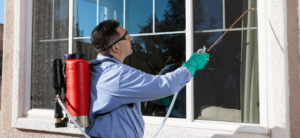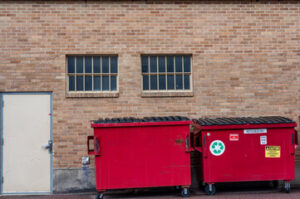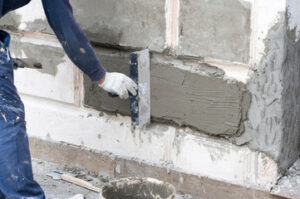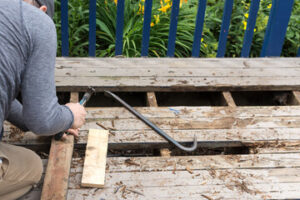Pest Control Calabasas CA companies can handle infestations, from figuring out the best removal strategy to monitoring traps. They can also choose safe, effective pesticides.
Biological pest control involves using a pest’s natural enemies to reduce its population. This can include introducing new enemies into the environment or supplementing existing ones with pheromones and juvenile hormones.

Pests pose health risks to humans and animals and can cause property damage. Hiring a Pest Control Operator (PCO) to perform preventive pest control can lower these risks. The PCO will identify infestation hot spots and create a treatment plan to address them using traps, baits or chemicals. It is important to use these products safely, following their label directions.
Practicing good hygiene and keeping food in sealed containers will help to keep pests at bay. In addition, a building should be free of clutter and debris where pests can breed or hide. A PCO can also advise on landscaping to reduce pest entry points into a building.
When pests enter buildings, they can carry disease-causing microorganisms, physically contaminate foodstuffs and damage equipment and storage areas. These problems are particularly dangerous in hygienic settings such as food preparation areas.
Pest problems can be caused by a number of factors, including a lack of sanitary practices, open doors and windows, poor cleaning, food spillage or trash, inadequate sanitation or garbage disposal, and the presence of suitable habitats. A lack of maintenance and repair of buildings, landscaping or storage areas can also lead to pest infestations.
The type of pest present can also influence the degree to which a problem develops. For example, some plant-eating pests are affected by weather conditions such as rainfall and temperatures, which may affect their population growth and thereby the extent of damage they cause.
Many pests are suppressed by natural enemies such as predators, parasites and pathogens. These natural controls can be supplemented by the release of these organisms into a treated area to increase their numbers and thus improve their ability to control pests. The objective of a suppression strategy is to reduce pest numbers or damage to an acceptable level.
Suppression
The goal of suppression is to reduce the pest population below damaging levels as quickly as possible using methods that are safe for people and beneficial organisms. This approach may be used when prevention has failed or when the pest population is at an unacceptable level and control measures are necessary. The right combination of techniques can often provide a knock-down effect, keeping the population low while avoiding damage to crops or plants.
The primary tools for controlling pests in the landscape are physical barriers, cultural practices, biological control agents and chemical controls. Physical barriers include removing food and water sources; closing off hiding places; and maintaining the proper balance of soil nutrients. Cultural practices include planting plants that are adapted to the site conditions and not easily damaged by pests, mulching and mowing, tillage and irrigation, and weed control. Biological control uses natural enemies, such as predators, parasitoids, and pathogens, to reduce the populations of plant-eating pests. Pathogens are bacteria, fungi, or protozoans that attack and kill insect pests. Predators and parasitoids are animals that feed on pests or their eggs and nymphs. Some predators and parasitoids can also be used to suppress the growth of some weeds.
Chemical control includes sprays, baits, and traps. The type of pesticide to use depends on the target pest and the environmental conditions, such as temperature, moisture, light, or wind. It is important to read the label carefully and follow the instructions and safety warnings.
Pest problems occur everywhere and can affect all living things to varying degrees. Some are continuous and require regular control, some are sporadic and do not always need control, while others are cyclical or migratory and only need to be controlled in certain circumstances. Many of the same factors that affect all living things influence pests, such as climate, natural enemies, and availability of food, water, and shelter. The timing and severity of a pest problem is determined by these factors, as well as the damage caused and the rate at which a pest population increases. Predicting when these factors will affect pests is important to prevent outbreaks and to begin control before they reach damaging levels.
Eradication
Pest control is a process that ranges from tolerance, deterrence, and monitoring to attempts at eradication. Eradication differs from suppression in that it seeks to completely eliminate the disease at a local, community, regional or global level. This is achieved by reducing the rate of transmission to zero so that new infections can be prevented before they occur in the susceptible population. Eradication programs require vigilance at many levels: surveillance, detection, diagnosis, and case reporting; intervention (such as spraying or quarantine); and monitoring of the environment (including removal of reservoirs). The goal is to eliminate all vectors, intermediary hosts, and human carriers in a given area.
Pests can be controlled using cultural, biological or chemical methods. Each of these techniques has its own advantages and disadvantages. Cultural techniques, such as removing or destroying infested plants and crop residues, can be inexpensive, effective and ecologically sound. Biological methods use helpful organisms to reduce pest populations. These can include predators, parasitoids and nematodes. Predatory insects, such as spiders and flies, can be particularly useful in household pest control. These creatures feed on a variety of pests, including fleas and cockroaches.
Nematodes, microscopic worms found in the soil, are another type of helpful organism used for insect pest control. These nematodes attack and kill harmful insects by injecting them with a deadly toxin. These nematodes can be purchased and applied by the millions to eradicate a wide range of pests, including fleas, grubs and ants.
Chemical pesticides are the most common and widely available method for eradicating pests. These products are available in the form of repellents that deter pests from entering a space, baits that attract and trap pests or insecticides that destroy them. Some types of pesticides, such as pyrethrins and pyrethroids, are derived from natural sources such as the chrysanthemum plant and are considered relatively safe for humans and pets. Other chemical pesticides, however, are very toxic and must be carefully handled and stored to avoid exposure.
To help keep pests away from the home, residents should remove food scraps, store trash in sealed containers and fix leaky pipes. Yards should be kept free of brush and tall weeds where pests can hide. Sealing cracks around the home and removing woodpiles can also reduce the chances of pest invasion.
IPM
Integrated pest management (IPM) is the most sustainable way to grow vegetables, fruits, flowers and herbs. IPM combines diverse methods of control, paired with monitoring and evaluation to reduce unnecessary pesticide use. This system is especially helpful for home gardeners, who can control the use of pesticides by using preventive and non-chemical techniques.
In IPM, gardeners monitor the behavior of insects, weeds and disease organisms to determine whether or not they need controlling. They scout the garden frequently and accurately to identify pests and their hosts. This step prevents the use of pesticides when they aren’t needed and reduces the likelihood that chemicals will be used on unhealthy plants or by mistake.
If pests are detected, the gardener works to manipulate environmental conditions to discourage them from growing. This might include removing their food and water sources, changing planting sites or caulking cracks to keep them out of buildings. Biological controls might also be employed to suppress pest populations, such as the release of natural predators or parasitoids. These are typically wasps and flies that lay their eggs inside a host insect, consuming them from within. Other biological control options are nematodes and fungi that attack damaging root rots.
Chemical control is often the last resort when all other options are exhausted. When pesticides are used, they’re aimed at specific species of bugs or weeds to ensure that no unintended harm is done. Gardeners use sprays, drenches, granules and dusts that are specifically labeled for their intended uses, reducing the chances of them being accidentally used on desirable plants or pets.
Preventive and non-chemical approaches to controlling pests can be just as effective in home gardens as they are on commercial agriculture farms. Gardeners can start by selecting adapted plants, planting them in the right places and providing adequate nutrients to their soils. They can also take measures to discourage pests, such as placing netting over berry and nut bushes to stop birds from eating them or putting out rodent traps to catch destructive pocket gophers. Then, they can carefully monitor pest populations to make sure that IPM is working.








